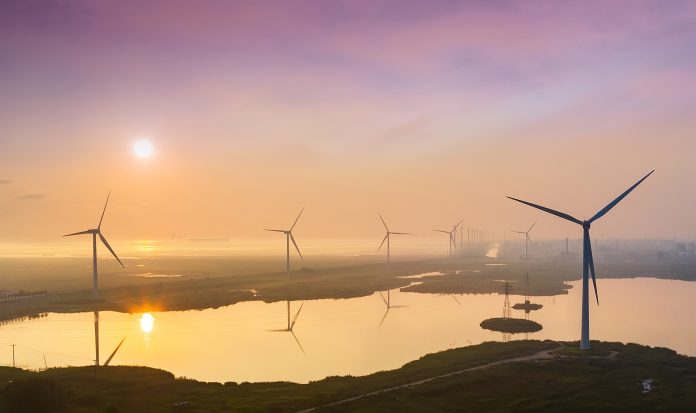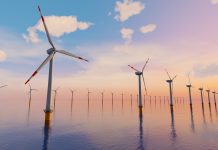Seiwoong Oh, Director of Asia-Pacific, ONYX Insight, explains what we need to know about Asian wind energy’s digital future
From Hanoi to Beijing, from Seoul to Tokyo, there has been a seismic shift in attitudes towards wind energy in recent years as net-zero targets loom into view. Across Asia, governments have sought to build out their nations’ wind capacities at pace – and investors have piled in to help realise these ambitions.
The move away from coal has not been trouble-free, however. Key markets such as China, Taiwan, South Korea and Japan face diverse obstacles in delivering wind energy at lower costs. But, as ever, the key to unlocking further investment is a solid understanding of assets to make wind farms more efficient.
One of the wind farm owners’ main controllable costs is their operations and maintenance budgets. Significant savings can be found by using smart approaches to data and monitoring to unlock greater insight into the health of wind portfolios, thereby driving sharper strategic investment decisions.
This article will look at some of the key obstacles seen by four major markets across the region – China, Taiwan, South Korea and Japan – and show where wind farm owners and operators’ opportunities lie as they look to boost asset profitability and pave the way for the next wave of wind investment across Asia.
China and Taiwan
China’s wind industry is booming. Last year, the country accounted for over half of new wind installations globally (1), with over 100GW installed. However, a key driver of this construction burst was the cut in onshore wind subsidies earlier this month (2), incentivising developers to bring their plans forward. China was also host to just over half of new offshore wind installations last year (3) and has now overtaken the previous global leader, the UK, in installed offshore capacity (4).
Meanwhile, in Taiwan, an ambitious 15GW offshore wind pipeline is set to make the island nation a key regional player – but local supply chain issues and labour shortages have slowed development (5).
In a new post-subsidy landscape, Chinese wind farm owners and operators will need to boost the productivity of their projects and cut waste. With digitisation well underway throughout the market, many new – and older – assets are primed to benefit from advanced ‘predictive maintenance’ strategies developed in mature European markets.
Predictive maintenance uses artificial intelligence and machine learning algorithms to identify trends in wind turbine data, unlocking insight into the current and future health of turbines. Improving the lead time when procuring replacement parts is just one of the many benefits of this approach, which can deliver savings of up to 30% from O&M budgets when implemented correctly across wind farms in China and Taiwan.
South Korea
South Korea’s wind sector is small by comparison with many established markets, but is now growing. Limited suitable land and lack of wind resource have driven wind developers in the region to look offshore to support the country’s net-zero goals – but deep waters close to shore and opposition from fishing groups have held back progress.
Partly due to these factors, wind energy in South Korea currently costs $220 per megawatt-hour (6), significantly above established markets in Europe. There are encouraging signs of a revival in the market, however, and South Korea’s government has supported a deal to build an 8.2GW offshore wind farm by 2030 (7).
With megaprojects such as this on the rise, it will be critical for South Korean wind farm owners to drive down the levelised cost of electricity. By using data on asset health to support a holistic approach to maintenance, they can optimise their offshore logistics and reduce asset downtime.
Japan
Following the Fukushima disaster in 2011, Japan remains wary of reinstating large portions of its nuclear capabilities. A rapid build-out of the country’s renewable energy capacity will help bridge this gap, and so Japan is investing significantly into wind.
Favourable wind resources and a long coastline offer significant opportunities for wind farm owners and operators in the market, but like South Korea and Taiwan, the lack of shallow seas has constrained development.
Production and labour costs are also high, driving key players such as Eurus and J-Power to invest in advanced digital monitoring and analytics to boost efficiency and lengthen the useful life of their assets.
Although it has traditionally been difficult for independent service providers to enter the Japanese market, forward-thinking global data analytics consultancies have built the necessary track record and references in Japan to support operators as they assess their O&M strategies for the years ahead.
Four markets, one solution
Wind power in Asia is set to be a driving force for both job creation and emissions reduction in the coming years. The opportunity is there for wind farm owners to seize. But to unlock additional investment, the wind sector in the region must make use of all available tools to improve profitability.
With a focus on long-term planning, a data-driven approach to operations and maintenance can help wind farm owners and operators deliver lower-cost clean energy in the next decade, and the decades to come.
References
- (1) https://gwec.net/global-wind-report-2021/
- (2) https://www.reuters.com/business/energy/china-stop-subsidise-new-solar-power-stations-onshore-wind-projects-2021-2021-06-11/
- (3) https://gwec.net/china-installed-half-of-new-global-offshore-wind-capacity-during-2020-in-record-year/
- (4) https://www.upstreamonline.com/energy-transition/china-overtakes-uk-with-world-s-largest-offshore-wind-power-capacity/2-1-1044437
- (5) https://www.rechargenews.com/wind/good-job-upsized-offshore-wind-bonanza-a-triumph-for-taiwan-but-challenges-loom/2-1-1010200
- (6) https://www.independent.co.uk/climate-change/south-korea-world-biggest-wind-farm-b1827404.html
- (7) https://www.reuters.com/article/us-southkorea-energy-windfarm-idUSKBN2A512D











